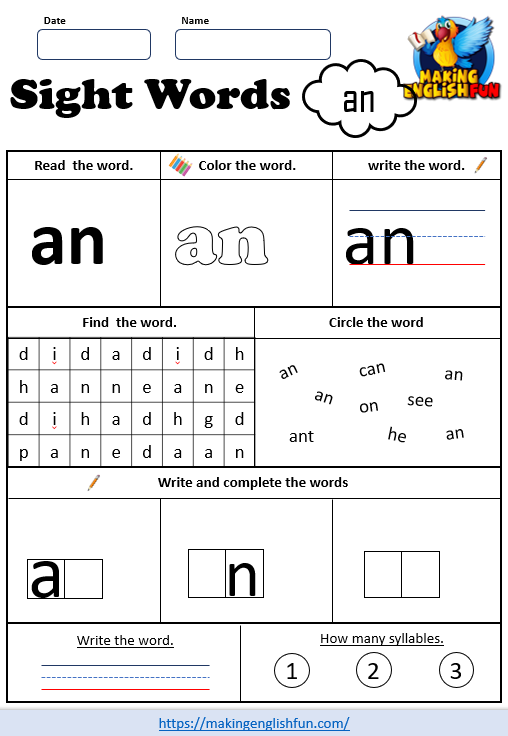What is the Best Age for Children to Learn a Second Language?
Many families are bilingual or trilingual these days. Some places, such as Canada and Hong Kong, also have areas with dual official languages. Deciding how and when to teach your child additional languages can be challenging. There are many expert opinions, but you will have to evaluate your child’s needs and abilities for yourself. The suggestions here are averages because each child meets milestones at different times.
The optimum time to introduce second languages to children is at 10 months to 18 months old. There is debate about what the best age for second language acquisition is but a strong consensus that it should start prior to 10 years old. After this language acquisition agility drops off sharply until adulthood.
Considerations
Keep in mind that many countries around the world teach their children multiple languages. In Native American or South African villages, it is not uncommon for children to speak three or four languages or dialects. For this reason, you should feel confident knowing that it is possible to teach your child a second language. The older your child is, however, the more challenging it becomes. Brainscape notes that studies have shown that learning a language after ten may mean that fluency in a second language is lost[1]. Beginning young will ensure that your child learns both languages just as they would their first language.
Challenges with Language Acquisition
You also must know your child. Some children have trouble with language and language acquisition. If you suspect that your child is having trouble with hearing or language processing, you may choose to wait before beginning to introduce a new language. This does not mean that it is impossible, but you need to consider your child’s needs and abilities. This, though, is unusual. Most children can learn a new language from an early age. Some parents, particularly those with multiple ethnicities, will begin teaching children two languages from birth. If they live in a country other than where the parents were born, they may teach the “new” language and their native language from birth.
What Constitutes a Second Language
Teaching your child a second language does not have to mean a native tongue and foreign language either. American Sign Language, British Sign Language, and any other sign language is a foreign language by language acquisition standards. Sign language has vocabulary, syntax, and structure.

First Language Abandonment
Another issue that some children have is abandoning their first language. When the reason a child is learning a second language is that they have moved to a new country or area that speaks a new language, it is not uncommon for them to abandon their first. This generally happens when the parents also stop speaking the first language in the home. If you are teaching your child a second language, it is crucial that you maintain the first language as much as the target language. Some people will also abandon their first language if their “school” language is in the second language. It is essential to their identity to maintain both. You can maintain the first language by providing books, movies, and speaking opportunities in their first language. Neither language is more important. It is imperative that they can communicate in their new home, but the connection to their roots is equally invaluable.
Confusion
One of the biggest issues that parents face is not wanting to confuse their children. Many parents are understandably concerned about their children becoming confused when learning multiple languages. The good news is that this is not a problem. Most children do not experience long term challenges related to confusion. There may seem to be a little confusion at first, especially if they learned one language primarily for the first year or so of life. However, young brains can make many synaptic connections, and the confusion subsides quickly.
How to Teach Your Child a New Language
Teaching your child an additional language is not that different from teaching the first language. You do not teach your child a new language in a vacuum. You do not teach your child bunny or hat or mommy by flashcards or formal measures; instead, you may hold a stuffed bunny and say, “do you want your bunny?” or similar phrases. In the case of teaching a second language, you would do the same thing with the target language. After speaking in the first language, you would repeat the phrase in the second language. The same is true if you are teaching your child to sign. As you speak the words, you would sign them. We have countless resources to help with early years instruction here. Our Phonics worksheets and activities should help practice target languages.
1) Practice Makes Perfect
Or to use another cliché, Use it or lose it! Introduce new vocabulary and sentence structures to you children, first in your native language then in your target language and make sure to return to the vocabulary or structures a week or so later. Play games with your children you can use our free printables here, they follow the format of other games and practice the language in a fun environment.
2. Use Actions and Expressive Activities
Introducing actions and motions to language instruction is really beneficial for young learners. Songs and chants and event activities like the action alphabet. Action songs teaching verbs and body parts are great ways to teach vocabulary and grammar. All these strategies are going to help comprehension and of course make it more interactive and fun!
4. Use Fun and Engaging activities
Keeping it interesting is a challenge, but instead of thinking just along the lines of the second language, try to make it so the students experiences the language not just learns it, try science experiments but do them in the target language, see if they can work out the instructions. If there is purpose to activities then children are going to find much more motivation to engage in them, and if they can have real world applications even better.
5. Use Step by Step Descriptions.
If you are at home with your children, watching television, doing washing making dinner. try to talk out each step in the target language. So if you are cooking dinner, let them help and discuss each step. I am opening the fridge, getting the milk, putting it in the bowl, getting a spoon etc etc. This allows children to hear the language in the correct context as they work along side you .
Final Thoughts
Although there are certainly better ages to start to teach your child a second language, there is no perfect time. As a parent, there are many things you will consider when beginning to teach your child a second language. However, you will make the best decision you can make. If you wait until your child is five or six, you will not be doing your child a disservice. At the same time, you will also be making the right decision if you teach your child an additional language from birth. The most important things to consider are how, when, and why you want your child to speak or sign additional languages.
Understanding your motives and your child’s abilities can make you more likely to be successful in learning another language. Christina Comben notes that children who speak a second or third language stimulate their creativity, and other resources claim that they are more successful later in life and have more employment opportunities[1]. Pick through any job board or help wanted listing, and you will find several bilingual advertisements. Many international businesses thrive on employees that speak multiple languages. Whatever you choose, help your child learn more than just the target language. Help your child understand the language and culture connected to their first, second, and subsequent languages.
Further reading
- Dept of Health and Human Services: Family Support for Bi Lingual Families
- Language and literacy
- Cognition development
- Talking to young children
[1] Comben, Christina. “What’s the Best Age to Start Learning a Second Language?” Day Translations, 21 November 2017, https://www.daytranslations.com/blog/age-for-second-language/
[1] “What’s the Best Age for Children to Learn a Second Language?” Brainscape Academy. 2020. https://www.brainscape.com/academy/best-age-to-learn-a-second-language/

Hi I’m Marc. A teacher of over 15 years, English, General Studies and Outdoor Education. Thought it was about time to sharing both what I have learnt during that time and the resources I have put together. On this site we aim to teach the theory and share our thoughts, but also go that one step further and give you access to the hard resources you need for your class or for you children







8 Comments